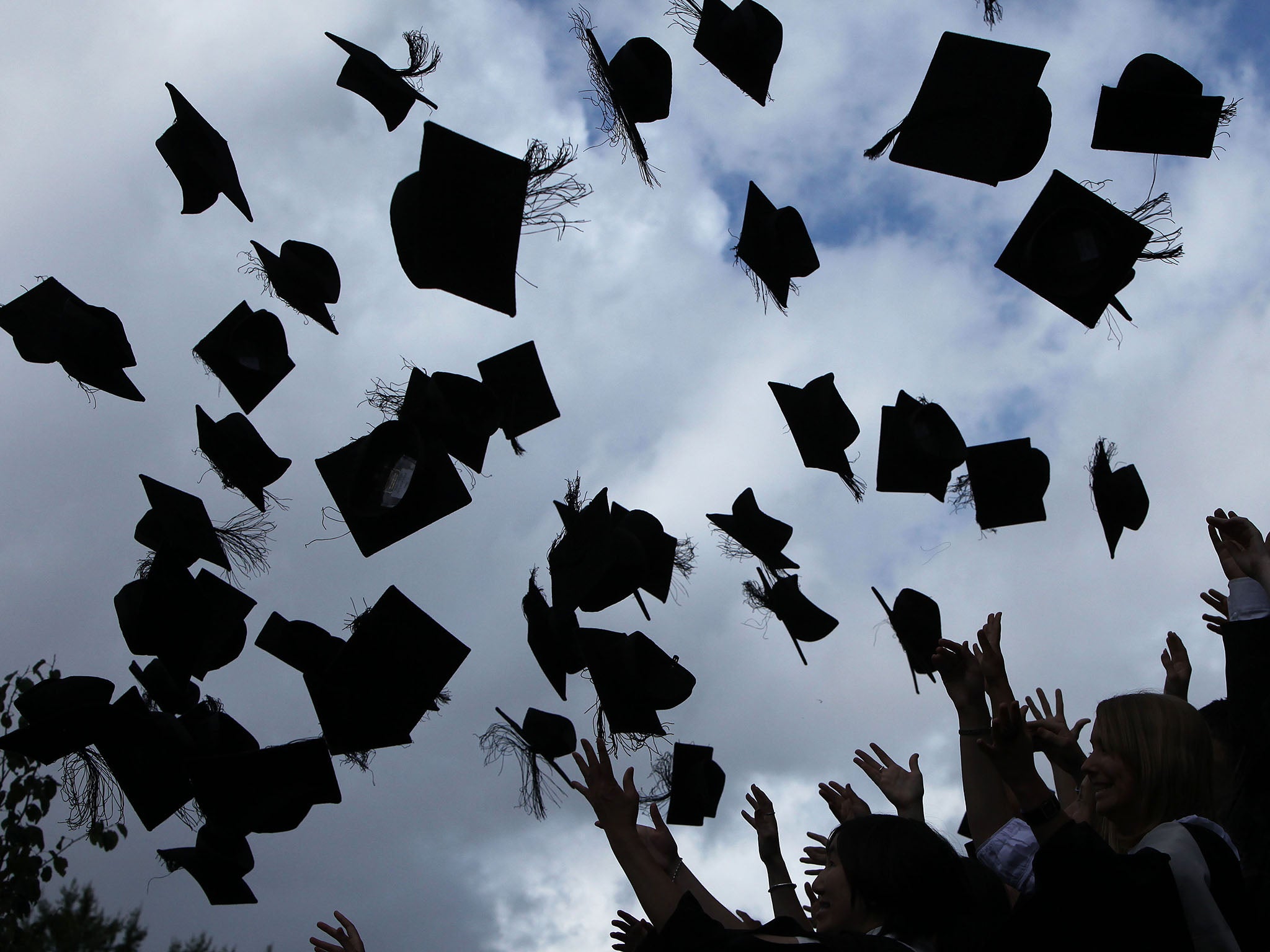Universities still fail to give three-quarters of places to state school pupils despite demands of ministers and regulator
‘Progress on this front is painfully slow,’ headteachers’ union says

Your support helps us to tell the story
From reproductive rights to climate change to Big Tech, The Independent is on the ground when the story is developing. Whether it's investigating the financials of Elon Musk's pro-Trump PAC or producing our latest documentary, 'The A Word', which shines a light on the American women fighting for reproductive rights, we know how important it is to parse out the facts from the messaging.
At such a critical moment in US history, we need reporters on the ground. Your donation allows us to keep sending journalists to speak to both sides of the story.
The Independent is trusted by Americans across the entire political spectrum. And unlike many other quality news outlets, we choose not to lock Americans out of our reporting and analysis with paywalls. We believe quality journalism should be available to everyone, paid for by those who can afford it.
Your support makes all the difference.More than 20 universities and specialist colleges are still failing to give three-quarters of places to state school pupils despite the push to widen access to higher education, official figures reveal.
In a third of the elite Russell Group universities, which are traditionally the most selective in the country, the proportion of students educated at state schools has fallen in the past year.
Only about 6 per cent of schoolchildren in the UK are educated in private schools. And yet in 22 institutions, the proportion of public school students is more than 25 per cent, the data shows.
Small specialist music and art colleges, as well as nine Russell Group universities, are included on this list.
It comes as universities in the UK are under increasing pressure from ministers and the regulator to boost the number of students from less privileged backgrounds.
Ninety per cent of young people from the UK starting degree courses in 2018-19 came from state schools – a rise of 0.1 percentage points on last year, figures from the Higher Education Statistics Agency show.
Exeter, Edinburgh and University College London were among the institutions with some of the lowest proportions of state school pupils – 64.7 per cent, 65.7 per cent and 65.9 per cent respectively – and their figures fell on last year.
The data also revealed that the proportion of students from highly disadvantaged areas has failed to improve. Just over one in 10 (11.4 per cent) were from areas of the UK where few youngsters went into higher education in 2018-19 – the same proportion as the year before.
Last month, the Office for Students (OfS) told top universities in England to significantly increase places for disadvantaged youngsters as it set out its ambition to halve the “access gap” in five years.
Dr Maria Neophytou, of social mobility charity Impetus, called the target a “worthy ambition” – but said there was a danger that “universities will end up fighting over the same pool of well-qualified young people, while very little is invested in widening that pool”.
Geoff Barton, general secretary of the Association of School and College Leaders, said: “It is infuriating to see that state school pupils continue to be under-represented at several universities.
“We recognise that universities are endeavouring to widen participation, through the use of approaches like contextual admissions which take into account the background of the student, but progress on this front is painfully slow.”
Chris Millward, OfS director for fair access and participation, said: “The reality is that each year of slow progress is one where thousands of people with the ability to excel in higher education are missing out.
“That is why it is so important that all universities and colleges registered with the OfS have set out the work they will do over the next five years to cut deep-seated gaps in higher education access and outcomes between the most and least advantaged students.”
The Russell Group said that the latest data from Ucas showed its universities are recruiting more students from low-participation neighbourhoods. But Cat Turhan, a policy analyst at the Russell Group, admitted: “We know there is more work to do in addressing educational inequality.”
A Universities UK spokesperson said: “Institutions have set ambitious targets in their access and participation plans – as shown in their commitment to halving the gap in access to undergraduate places between the most and least privileged students by 2025 – but this data makes it clear that challenges and disparities remain in making further progress.
“We know that more people are applying to university, and the gap between the most advantaged and disadvantaged applicants is at a record low, but there is a shared will in the sector to see gaps narrow further and universities will continue to work to do this.”
Join our commenting forum
Join thought-provoking conversations, follow other Independent readers and see their replies
Comments